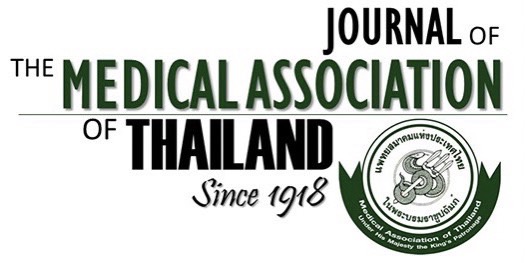Difficult Intubation in the Adult Patients Undergoing Oropharygolaryngeal, Neck, and Maxillofacial Procedures: Thai Anesthesia Incident Monitoring Study (Thai AIMS)
Annop Piriyapatsom MD*, Tharnthip Pranootnarabhal MD*, Ketchada Uerpairojkit MD**, Yodying Punjasawadwong MD***, Sirilux Chumnanvej MD****, Surasak Tanudsintum MD****
Affiliation : * Department of Anesthesiology, Siriraj Hospital, Mahidol University, Bangkok, Thailand ** Department of Anesthesiology, Chulalongkorn University, Bangkok, Thailand *** Department of Anesthesiology, Chiang Mai University, Chiang Mai, Thailand **** Department of Anesthesiology, Phramongkutklao College of Medicine, Bangkok, Thailand
Background : Difficult intubation is one of the common anesthetic related complications during the perioperative period. In
the patients with pathology or disease involving the oropharyngolarynx, neck, or maxillo-facial region, they might have a
potentially higher risk than the general population.
Objective : To determine the characteristics and the contributing factors of difficult intubation in the adult patients undergoing
oropharyngolaryngeal, neck, and maxillofacial procedures, and the factors minimizing this incidence and the suggested
corrective strategies.
Material and Method: All incident reports of difficult intubation in the adult patients who received general anesthesia for the
procedure involving the oropharyngolarynx, neck, and maxillofacial region from the Thai Anesthesia Incident Monitoring
Study (Thai AIMS) database were identified. The details of the reports, the contributing factors, the factors those minimizing
the incident, and the suggestive corrective strategies were studied.
Results : There were 26 (1.3%) incident reports of difficult intubation from the database. This occurred in 35%, 58%, and
15% of the patients with Mallampati class 1-2, thyromental distance equal or more than 5 cm or 3 fingerbreadths, and
combined both parameters, respectively. Forty two percent of cases were judged as an unplanned difficult intubation. Twenty-
seven, 23, and 19 percent of the patients had tumor or carcinoma at the oropharyngolarynx, deep neck infection, and
maxillofacial fracture, respectively. Nearly half of the adverse events accompanied with difficult intubation were desaturation.
No immediate fatally and late outcome was reported. Patients’ disease/anatomy was the major contributing factor that might
relate to the incidence. Previous experience, experienced assistance, and high vigilance were the factors minimizing incidence.
Suggestive corrective strategies were guideline practices, additional training, and improved supervision.
Conclusion : Carefully preoperative airway assessment and additional attention focused on the pathology or disease were the
principle tasks. Algorithms for both anticipated and unanticipated difficult airway as well as alternative airway equipments
should be implemented.
Keywords : Difficult intubation, Oropharyngeal, Neck, Maxillofacial procedure, Thai AIMS



